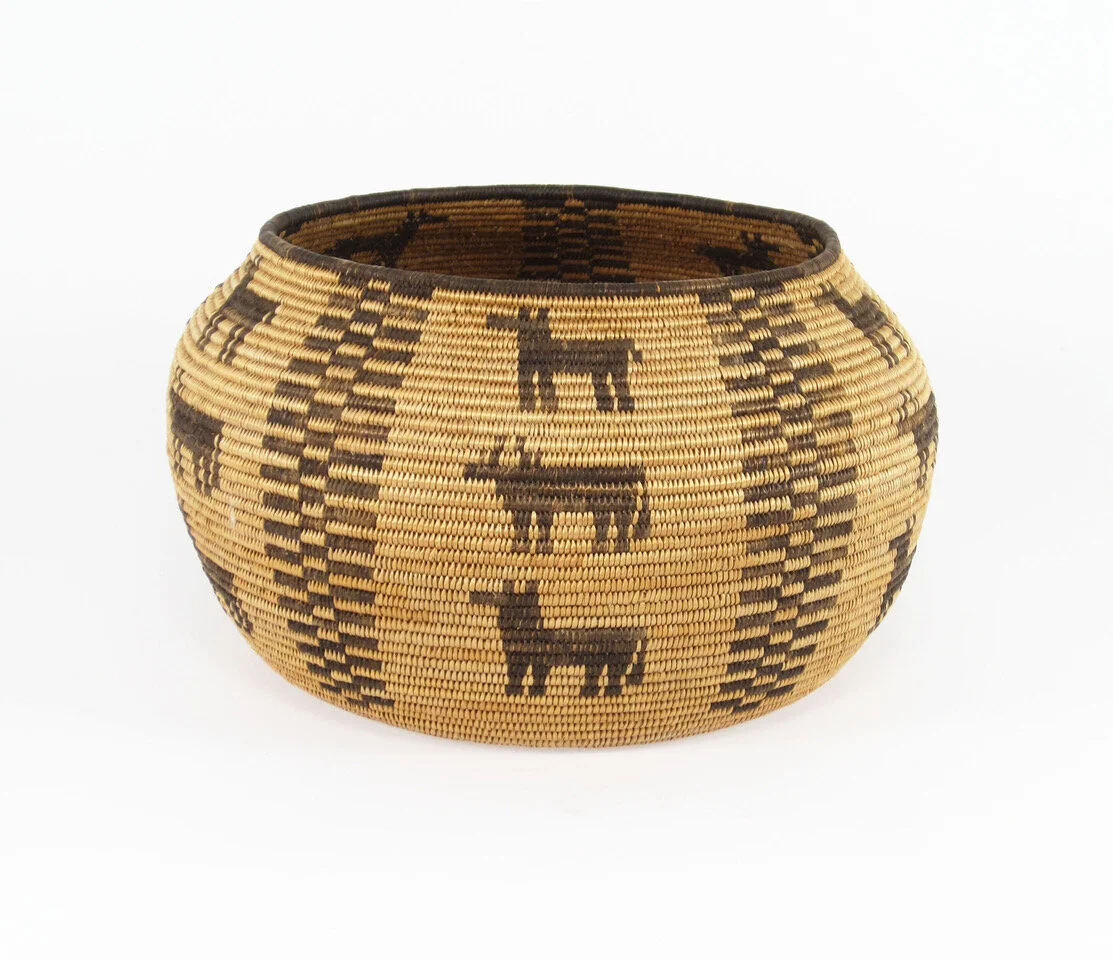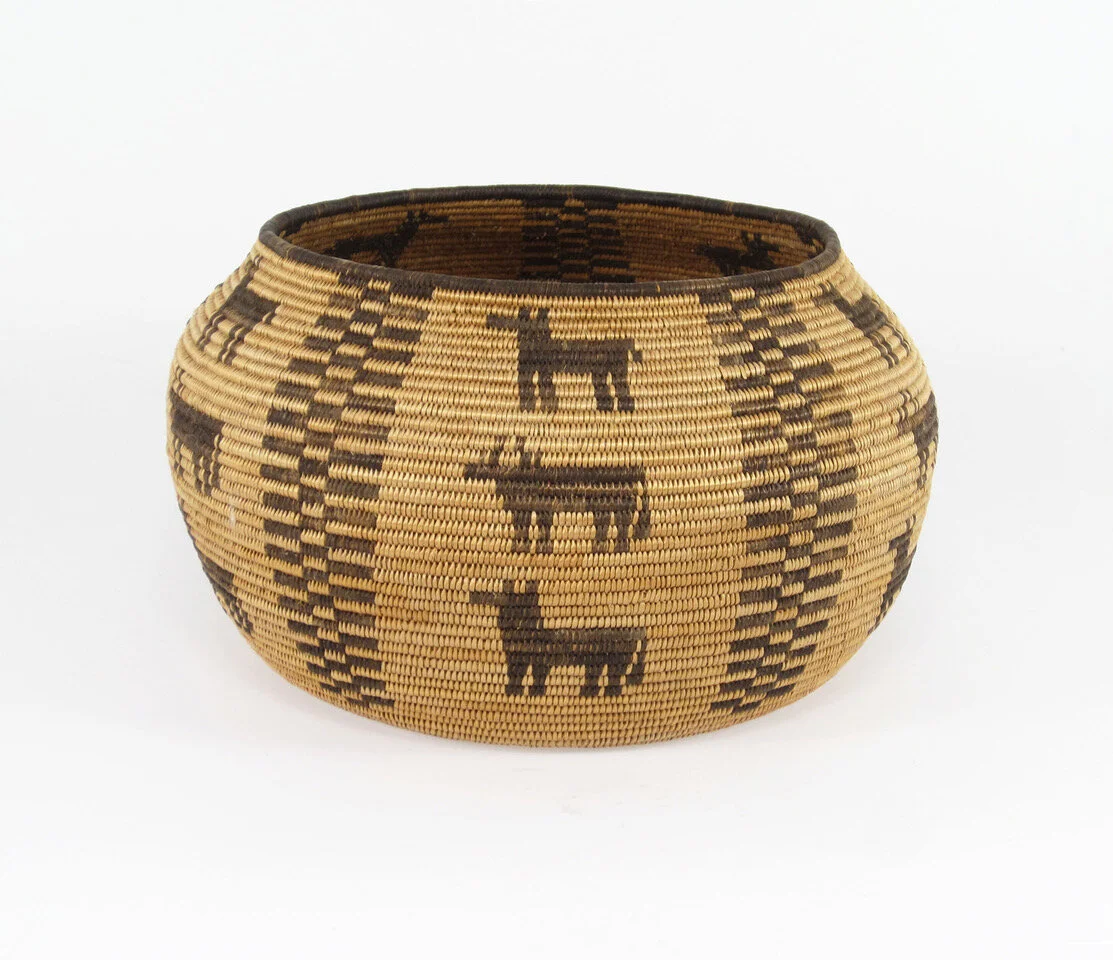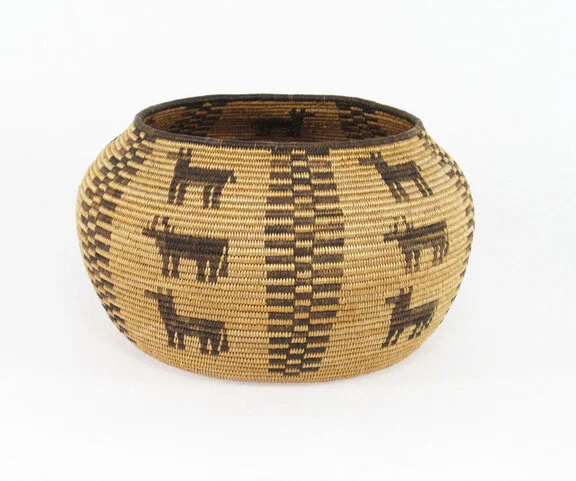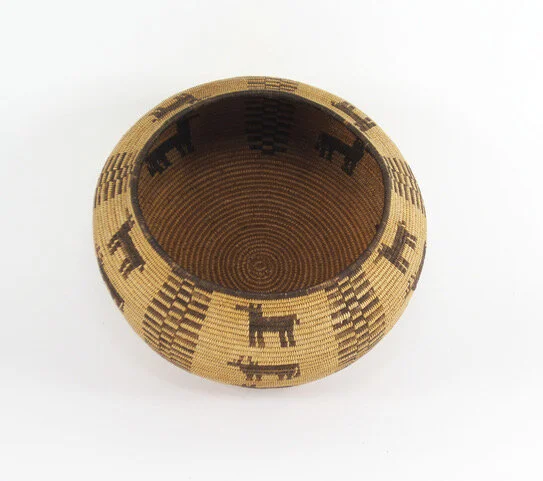Havasupai pictorial coiled basket
Havasupai pictorial coiled basket
6 5/8” diameter x 4” high
coiled out of willow and devil’s claw
24 stitches per inch and 8 1/2 coils per inch
excellent condition
ex: Sotheby Parke-Bernet American Indian Art/Green Collection, 1971, lot 86 (labeled Chemehuevi); Private Collection; Marcy Burns Collection, 1995.
circa 1930s, the peak period in Havasupai basketry
SOLD
(mc2255)
Sotheby’s, Parke-Bernet held two landmark sales of The Green Collection of American Indian art in 1971. This basket was offered as lot 86 in the November 1971 sale. The sale of the Green Collection is hailed as the landmark sale of American Indian Art in the 20th century. It drew attention to the high quality and aesthetics of the best of American Indian and it was the trigger for the onset of the strong commercial marketplace for American Indian Art that continues to this day. The very fine quality of weave along with the very realistic representation of cattle and horses makes it a very desirable basket to own.
The Havasupai live in the Havasu Canyon, which adjoins the Grand Canyon. They live near other Apache and weave with the same materials (willow and devil's claw). Their designs are remarkably similar to the Yavapai but they can be distinguished by some technical details. Havasupai baskets are fairly rare, perhaps because they had limited trade with others due to the difficulty they had in getting their baskets to the top of the canyon and thus to traders. In addition, they are a fairly small tribe.
The best of the Havasupai coiled baskets were woven between 1929 and 1940 (*see book references). There were improved routes to the top of the canyon by this period and the weavers could now weave innovative and desirable baskets to be sold. Trade in American Indian baskets has always rewarded those with figural design elements, human and animal.
https://www.marcyburns.com/baskets-collection/havasupai-figural-coiled-basket
*Leslie Spier, Havasupai ethnography (American Museum of Natural History, Anthropological Papers v 29, pt 3).
*Barbara and Edwin McKee and Joyce Herold, Havasupai Baskets and their Makers: 1930-1940 (Northland Press, 1975), pp 6-7.






